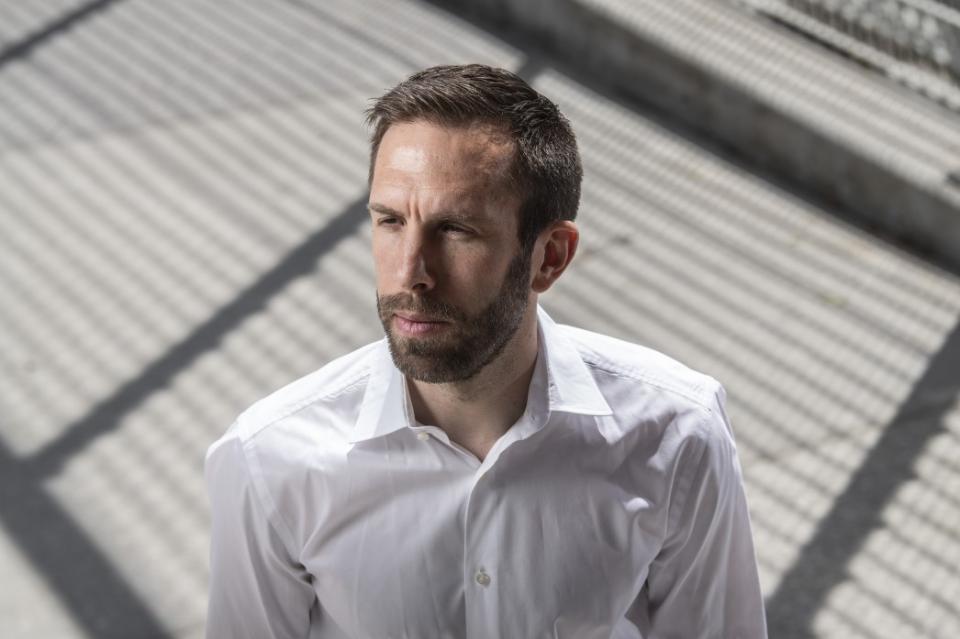
Why hackers also create investment opportunities
From phishing to sabotage, data theft to deepfakes, cybersecurity is no longer just a technological challenge, but an economic priority. This presents opportunities for investors.
Cybersecurity reinforces its own growth: as risks increase, solutions become more complex and investments rise.
Steven Vermander, Portfolio Manager KBC Asset Management
Modern warfare is no longer restricted to physical battlefields. Digital enemies also launch attacks to target citizens, cripple businesses and destabilise governments. These attacks are not random; they are often part of a broader strategy of hybrid warfare. Think of pro-Russian hackers taking down European government websites, for example. ‘We live in a world where a well-executed cyberattack can be as disruptive as a physical conflict,’ says Steven Vermander, Portfolio Manager at KBC Asset Management. ‘But the fact that governments and companies have to be constantly on guard actually creates opportunities for investors.’

The numbers are impressive: around 600 million cyberattacks take place every day worldwide, according to Microsoft. That’s more than 27 000 per second. According to Cybercrime Ventures, the total global cost of cybercrime was no less than 9 500 billion US dollars in 2024. To put that in context, if cybercrime were a country, it would be the third-largest economy in the world. This doesn’t only concern direct financial damage: corporate images are at stake, personal data is disseminated and identity details are misused.
The threat is also real in Belgium. ‘According to VLAIO (ed. Flemish Agency for Innovation & Entrepreneurship), 10% of Flemish companies faced a cyberattack in 2023,’ says Vermander. ‘Last year the number was close to 50%. One in ten attacks were successful and the results ranged from crippled online retailers to stolen customer data.’
The cat, the mouse and AI
The rise of AI is pushing the boundaries of what is possible, both for attackers and for defenders. Deepfakes make it child's play to trick people with convincing fake videos. ‘Just last year, there was the case of an employee who transferred 25 million dollars following a deepfake video call with someone posing as the company’s CFO,’ Vermander explains. ‘At the same time, AI also offers new defence capabilities, such as detecting suspicious transactions faster or predicting vulnerabilities in systems. It's a highly sophisticated game of cat and mouse.’
Globally, more than 27 000 cyberattacks take place every second. This means that cybersecurity is not only a defence mechanism, but also an opportunity for those who look ahead.
Steven Vermander, Portfolio Manager KBC Asset Management
In addition, there is the threat of quantum technology. Although quantum computers are not yet commonplace, if a breakthrough occurs in the future, they could crack encryption – the mathematical backbone of our digital security – in an instant. ‘Our entire digital existence is based on encryption: from WhatsApp messages to e-commerce. If quantum computers are able to crack those codes, the security of the entire internet will be at risk. The race to develop quantum-resistant security is therefore in full swing.’
Cybersecurity: from cost to core investment
The digital transformation of our society is creating a structural demand for cybersecurity. ‘We are all producing more and more data through smartphones, laptops, cars and the Internet of Things,’ says Vermander. ‘The more data that is available, the more it can be misused.’

Meanwhile, there is growing awareness that prevention pays off. ‘There is no such thing as 100% cybersecurity,’ Vermander stresses. ‘But organisations that are committed to cyber resilience – with clear crisis management procedures and a real culture of security – are much more resilient to potential incidents.’
According to the market research firm Precedence Research, the global cybersecurity market was worth 268 billion dollars in 2024. By 2034, that figure is projected to reach 878 billion dollars, an annual growth rate of 12.6%. The industry is evolving along with the risks: from network and endpoint security to identity management, cloud security and real-time back-ups. This means that cybersecurity reinforces its own growth: as risks increase, solutions become more complex and investments rise.
A structural growth trend for investors
For investors looking to diversify their portfolios beyond the traditional big-tech players, cybersecurity offers interesting opportunities, but there are also risks. ‘Strong growth and increased attention mean that valuations of many shares in this sector are high,’ warns Vermander. ‘The market is volatile. It is therefore important that investors do their homework, choose the right segments and diversify sufficiently.’
The digital frontline presents risks but also opportunities.
Steven Vermander, Portfolio Manager KBC Asset Management
Either way, the structural trend is unmistakable. ‘Modern cybersecurity is no longer just an IT expense item, but a strategic issue,’ concludes Vermander. ‘In a digital world where data is the new gold and attacks are becoming increasingly sophisticated, investing in digital security is no longer a luxury, but a necessity.’
Want to read more about thematic investing?
The content of this article is for information purposes only and should not be considered as investment advice.

